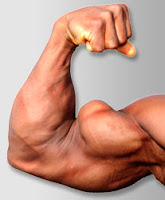Glycogen-Free Muscle Growth - Erratum: Differences in P70K-Phosphorylation Between Glycogen De- and Repleted Leg Even Less Significant Than Previously Reported.

Image 1: For the SuppVersity Super-Student Duong Nguyen , training in the semi-fasted state worked wonders. Want to know more? Read his guest-post and visit his blog . This is post #713 and another premier. It's the first time that I have to go back (at least partly) on something I posted three weeks ago in a post about the myth that well-stocked muscle glycogen stores would be necessary to induce an anabolic growth response in skeletal muscle. Those of you who read the respective blogpost probably remember that I had to rely on the little information there was in a short abstract that had been published in the program of the 2011 ISSN conference, because a full paper with all the information on the study had (and still has) not been published. Now, three weeks and a long and interesting email-correspondence with the author, Donny Camera from the RMIT University in Melbourne, Australia, later, I have to admit that (my interpretation of) the abstract was not comp...




